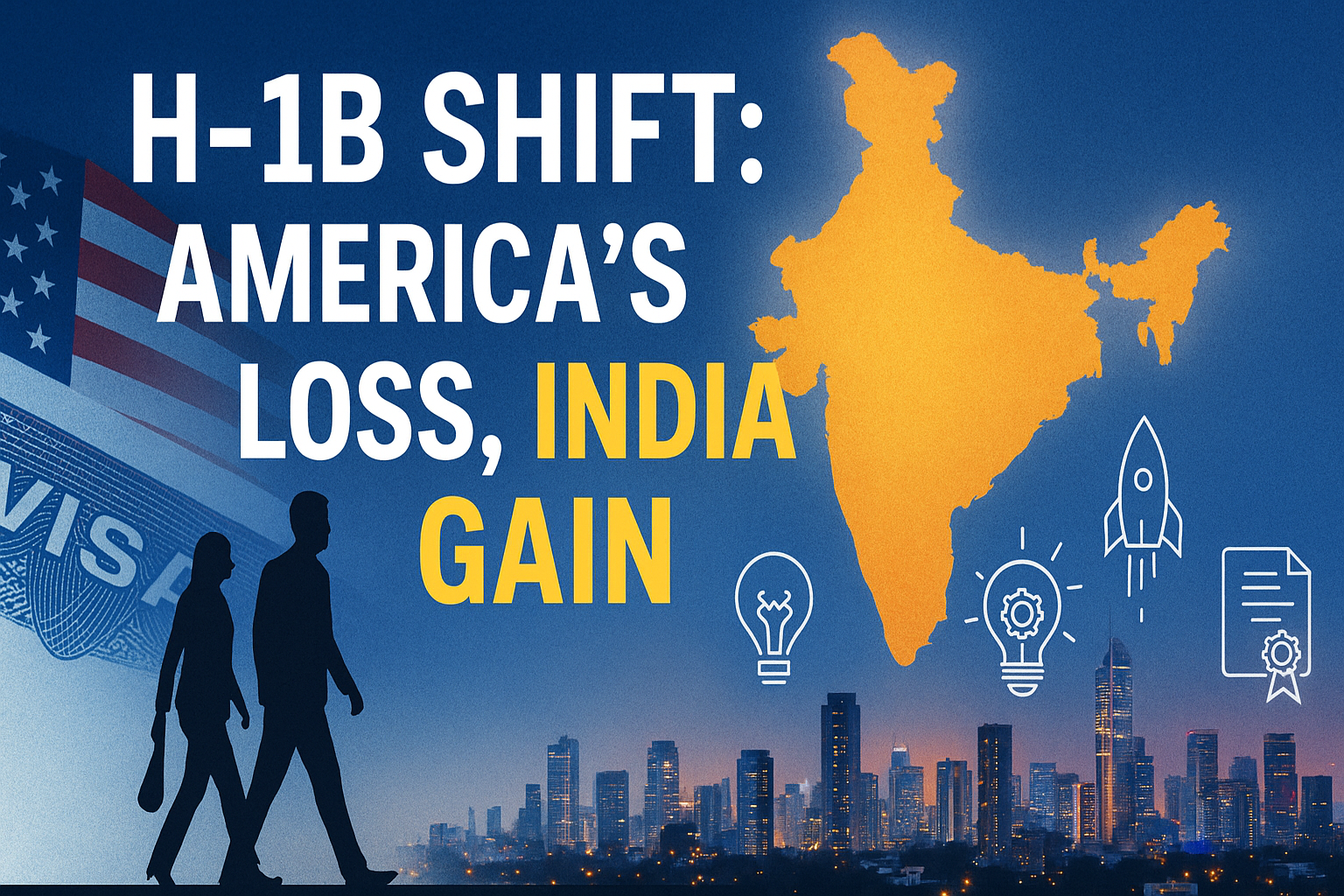The Indo-American dream is no longer just aspirational—it’s transactional. With the U.S. imposing a $100,000 annual fee on every H-1B visa, opportunity has been recast as privilege.
For decades, the H-1B symbolized the Indo-American dream—India’s brightest powering U.S. innovation. Indians accounted for 71% of all approved H-1B applications in FY2022 (USCIS, via News18). Now, what looks like a barrier in America could become a catalyst in India.
Why India Gains
Talent Retention
Instead of chasing costly U.S. visas, skilled professionals may stay back. India already hosts 320,000+ H-1B holders (Boundless, via Hindu BusinessLine), many of whom may redirect expertise to domestic opportunities.
Reverse Brain Drain
Former NITI Aayog CEO Amitabh Kant called the move “America’s loss but India’s gain”, predicting labs, patents, and start-ups will increasingly root themselves in Bengaluru, Hyderabad, Pune, and Gurugram.
Global Capability Centres (GCCs)
U.S. firms are expected to accelerate investment in India. GCCs already employ 1.6 million professionals (NASSCOM, 2023), and the fee will likely drive further offshore expansion.
Entrepreneurial Surge
Snapdeal co-founder Kunal Bahl noted that returning professionals will raise India’s “talent density,” strengthening the start-up ecosystem.
The Bigger Picture
The U.S. issues 85,000 H-1B visas annually. With costs now prohibitive, America risks choking its innovation pipeline. India, meanwhile, gains a wave of highly skilled professionals, capital, and global credibility.
Takeaway
What was once a one-way flow of talent is becoming a two-way exchange. The Indo-American dream, though transactional today, may accelerate India’s rise as a global innovation hub.

